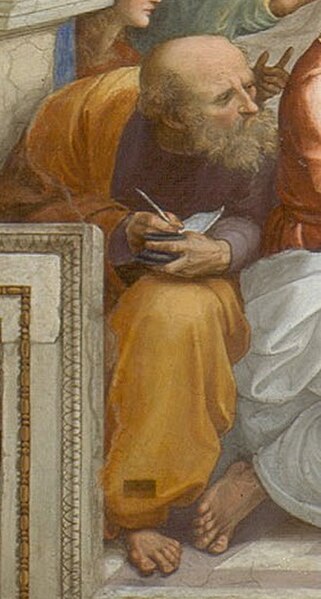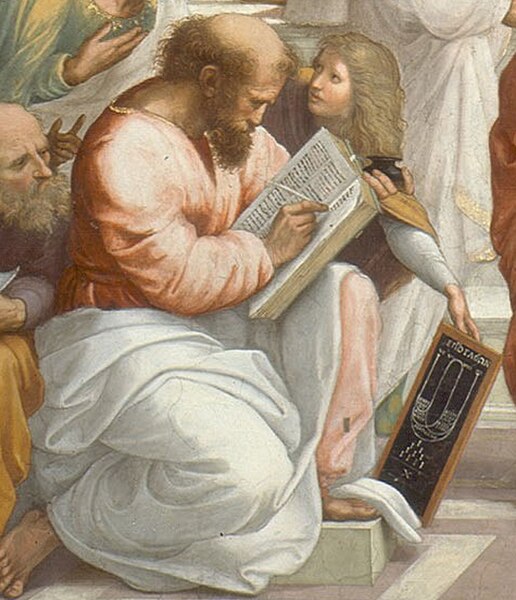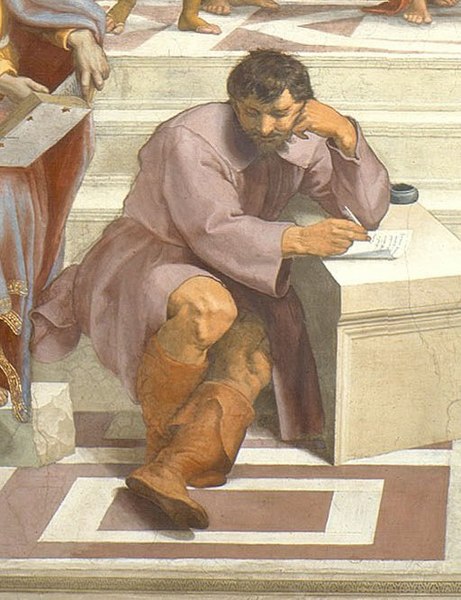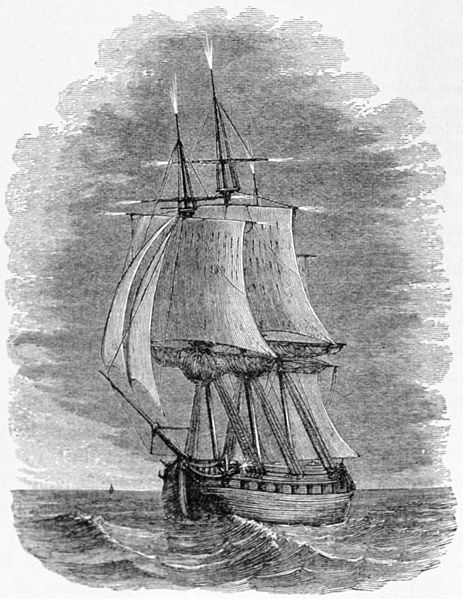Anaximander was a pre-Socratic Greek philosopher who lived in Miletus, a city of Ionia. He belonged to the Milesian school and learned the teachings of his master Thales. He succeeded Thales and became the second master of that school where he counted Anaximenes and, arguably, Pythagoras amongst his pupils.
Anaximander in a 17th century portrait by Pietro Bellotti
Ancient Roman mosaic from Johannisstraße, Trier, dating to the early third century AD, showing Anaximander holding a sundial
Detail of Raphael's painting The School of Athens, 1510–1511. This could be a representation of Anaximander leaning towards Pythagoras on his left.
The sight of stars circling the Pole star and vanishing and reappearing at the horizon could have suggested to Anaximander that the Earth was surrounded above and below by a void.
Pre-Socratic philosophy, also known as Early Greek Philosophy, is ancient Greek philosophy before Socrates. Pre-Socratic philosophers were mostly interested in cosmology, the beginning and the substance of the universe, but the inquiries of these early philosophers spanned the workings of the natural world as well as human society, ethics, and religion. They sought explanations based on natural law rather than the actions of gods. Their work and writing has been almost entirely lost. Knowledge of their views comes from testimonia, i.e. later authors' discussions of the work of pre-Socratics. Philosophy found fertile ground in the ancient Greek world because of the close ties with neighboring civilizations and the rise of autonomous civil entities, poleis.
Pythagoras
Parmenides
Heraclitus
St. Elmo's fire (luminous plasma created by a corona discharge from a rod-like object) in a ship. Xenophanes' contemporaries attributed this phenomenon to the deity Dioscuri. Xenophanes argued that the observed illumination is due to small clouds influenced by special circumstances relating to stars—an example of naturalism and reductionism.








